How Does Windows Backup Work? Explanation to All 3 Windows Backup Tools
PAGE CONTENT:
- 1. File History Windows 8/10 - Default
- 2. Backup and Restore Windows 7/10 - Default
- 3. Qiling Backup Windows 7/8/10 - Download
"There are two kinds of computers - Those that have failed and those that will"
It's a widely spread sentense that emphasizes the importance of backing up your computer with entire Windows OS installation, customized configuration, programs, and files. It's nothing but painful to rebuild your computer from scratch after a long time use due to a severe system crash, hardware failure, malware attacks and all kinds of unexpected disasters that damage your hard drive and corrupt your files. With a full backup of everything you care, you would certianly be released to handle the accident by recovering your computer from its previous state, without reinstalling OS or suffering from permanent data loss.
Windows Backup Strategy - What Is It?
Generally speaking, for all PC and laptop users, the Windows backup strategy can be divided into two categories: One is the native Windows backup tool preinstalled along with the system, and the other is a third-party alternative that needs a manual download. Both strategy is for providing users with a solution to back up desired data, though the solution of each is selected to be a basic one or an advaned one.
The native Windows backup tool is made-ready, which is rarely changed from one Windows version to the other; while a third-party Windows backup program is usually your best bet, for that it has been optimizing, updating and upgrading in every aspect that facilitates the whole backup process and guarantees the best result of a slim, secure and solid backup image.
- In Windows 7, the default Windows backup program is "Backup and Restore"
- In Windows 8, the default Windows backup program is "File History"
- In Windows 10, Microsoft decided to keep both. "File History" is the prior backup choice, while you can still choose to restore an old backup via "Backup and Restore (Windows 7)"
When it comes to downloading a third-party backup application on your PC, it has to be Qiling Backup. It's acknowledged the most cost-effective yet powerful Windows backup and recovery solution among the third-party ones. Particularly, as for the "backup" area, 99% of the options are FREE.
How Does Windows Backup Work?
No matter which side of the backup strategies you choose, the first thing you should do is set up the backup task, and in the first place, create a full backup. Any backup task that is later running on your PC is based on the previous full backup.
In the default Windows backup plans, the configuration options are limited when it comes to select what items to back up, while the Qiling free backup software covers almost everything our users tend to back up. Compare the difference in the below table.
| Backup Configurations | File History | Backup and Restore | Qiling Backup |
|---|---|---|---|
| Hard Drive or Partition | No | Yes | Yes |
| Operating System | No | Yes | Yes |
| Files and Folders | Yes | Yes | Yes |
| Outlook/Exchange Mail | No | No | Yes |
| Compress Backup Image | No | No | Yes |
| Encrypt Backup Image | No | No | Yes |
| Backup Automation | No | No | Yes |
How to Back Up Files and Folders Using File History
Windows File History is the primary backup strategy for Windows 10 computers. It's exclusively for creating backups of files and folders of saved games, downloads, favorites, pictures, documents to name a few. You can choose to add more folders on your computer hard drive, or remove those folders you think they're unnessary. For example, we do not recommend back up OneDrive folder as it's syncing to the cloud drive automatically.
To make File History work, you must:
- Use an external hard drive, USB flash drive or SD card to save the backups
- Use additinal backup method to create a system backup image
Step 1. Select Start > Settings > Update & Security > Backup > Add a drive , and then choose an external drive or network location for your backups.
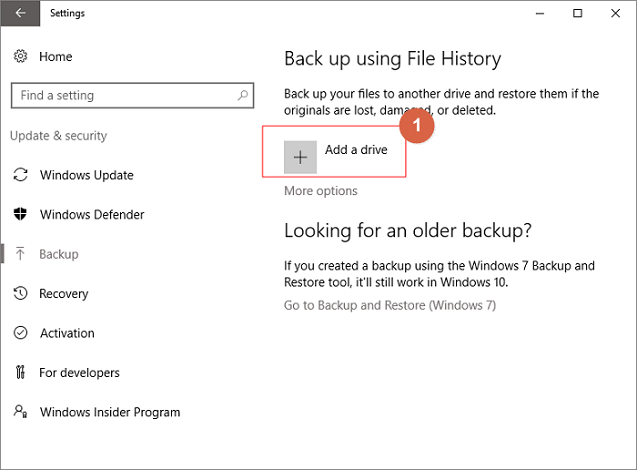
Step 2. After choosing a drive, the Automatically back up my files option will be enabled, and then please select More Options to set up the cycle time and folder of backup settings.
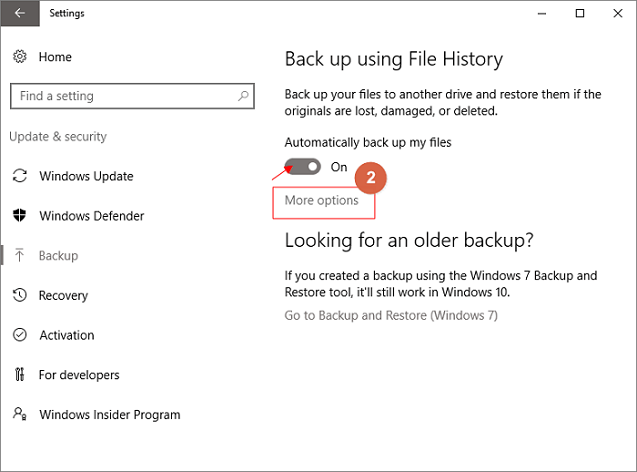
Step 3. Choose the cycle time of how often you want to back up your files once, and the period of how long you want to keep your files.
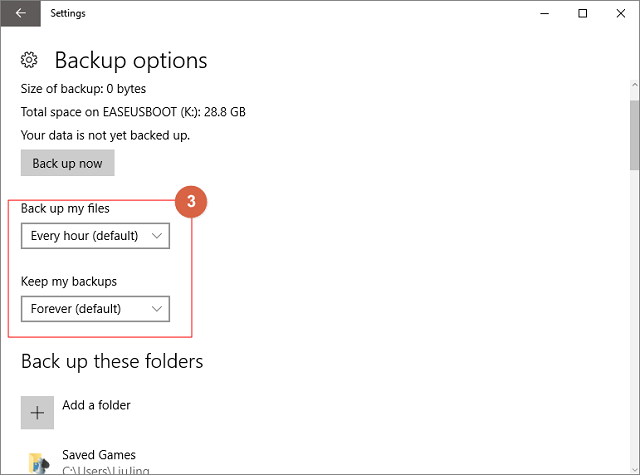
Step 4. The following will list which folders are backed up, and you also can select Add a folder to add the folders you want to back up.
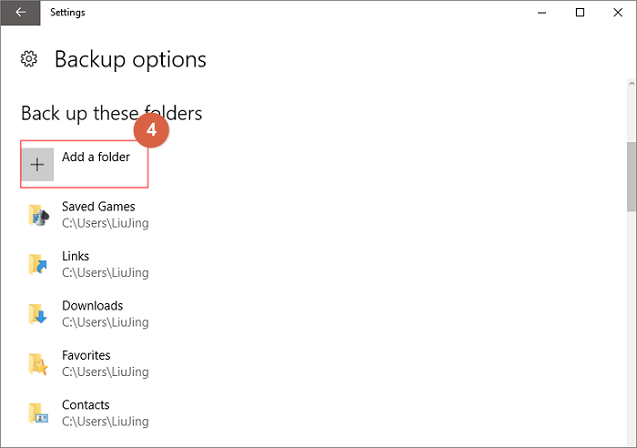
Step 5. At the same time, you can exclude some folders you don't want to backup. Click "Add a folder" under the option "Exclude these folders".
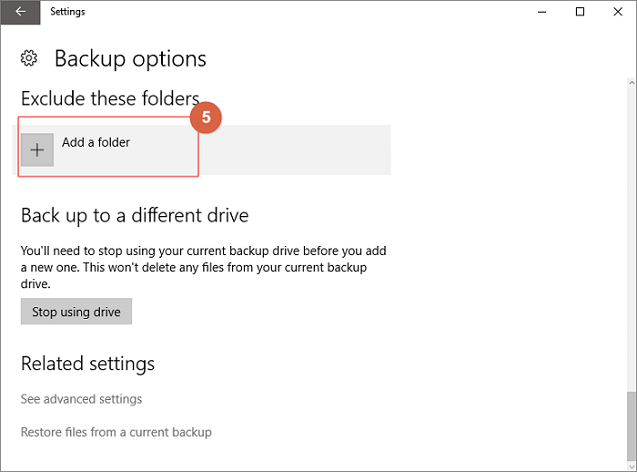
Step 6. After the setup is completed, please select Back up now.
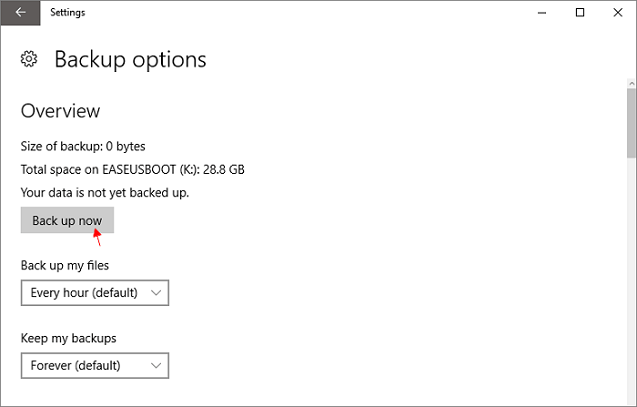
Step 7. If you want to change to a different backup drive, you need to stop using your current backup drive first. Please select Stop using drive, then you will be able to choose another drive to back up your file.
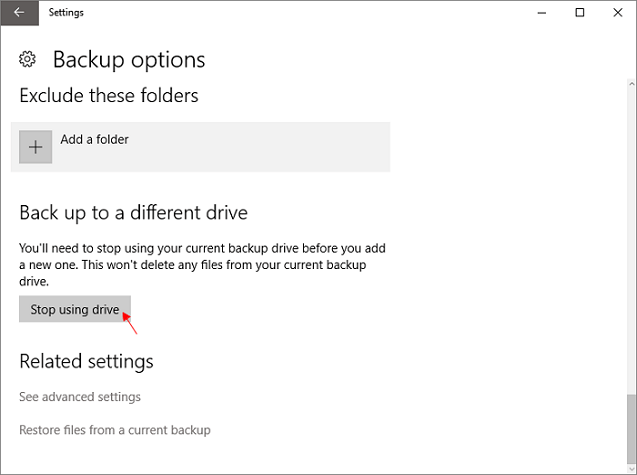
How to Back Up PC Using Windows 7/10 Backup and Restore
Compared with File History, the older Backup and Restore program can do much more work in creating backups of operating system and files/folders. To be able to restore files and folders from a backup, you must choose what to back up by youself instead of using the default Windows choice.
Windows 7 and Windows 10 Backup and Restore lets you:
- Create a backup of any items on your PC, including a drive, seletected files and folders and operating system
- Save the backup images to a local hard disk, an external hard disk or network drive
Step 1. In Windows 10, for example, open Control Panel and find the option "Backup and Restore (Windows 7)" and open it.
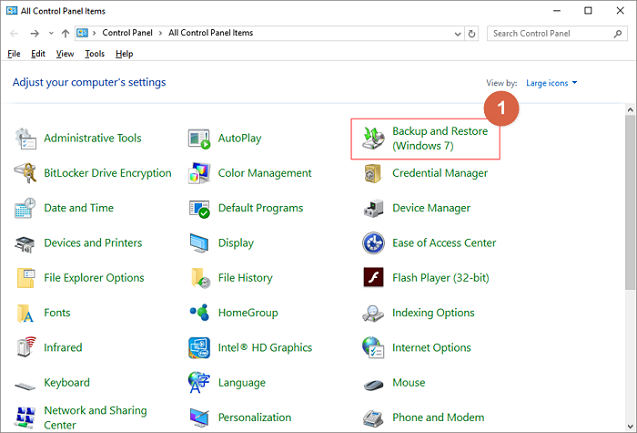
Step 2. To begin with, click the Set up backup link if it's the first time you set up a backup file on your computer.
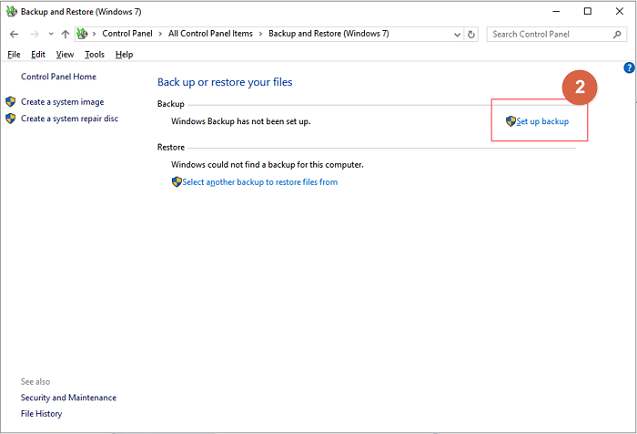
Step 3. The next new windoww will provide a list of available drives for saving your backups, which can be a local drive or an external drive. Windows recommend that you save your backup on an external hard drive for the sake of safety. You can also choose a network drive if possible. After selecting the destination drive to save the backup, click "Next".
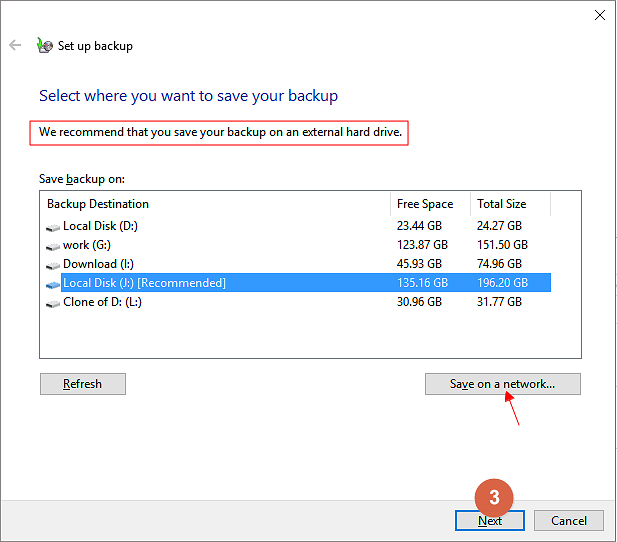
Step 4. Now you need to choose what the backup will contain according to two options: "Let Windows choose (Recommend)" and "Let me choose".
- f you want to use the default option "Let Windows choose", Windows Backup creates two backup types in a single operation: a system image, that can be used for disaster recovery, and a backup of data files found in your user's libraries, the Windows desktop, and default Windows folders.
- Whereas the second option "Let me choose" allows you to back up individual folders, drives or libraries according to your own needs.
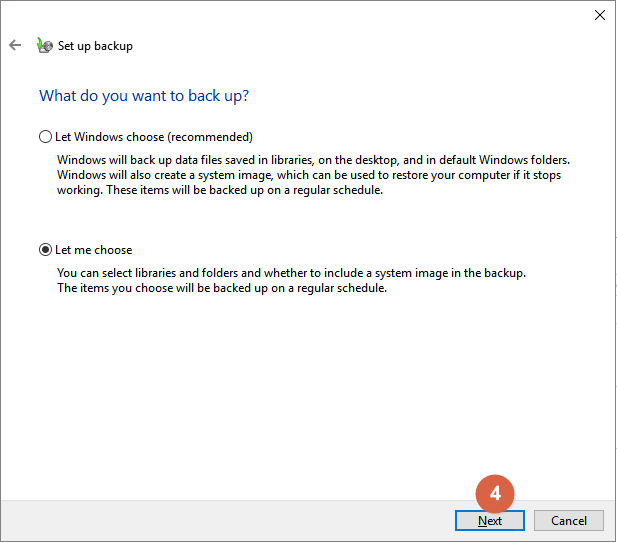
Let's continue with "Let me choose". There you can choose simply all desired items in every drive and folder. We advise you always tick the option "Include a system image of drives" in case you'll use it to restore your computer if it stops working.
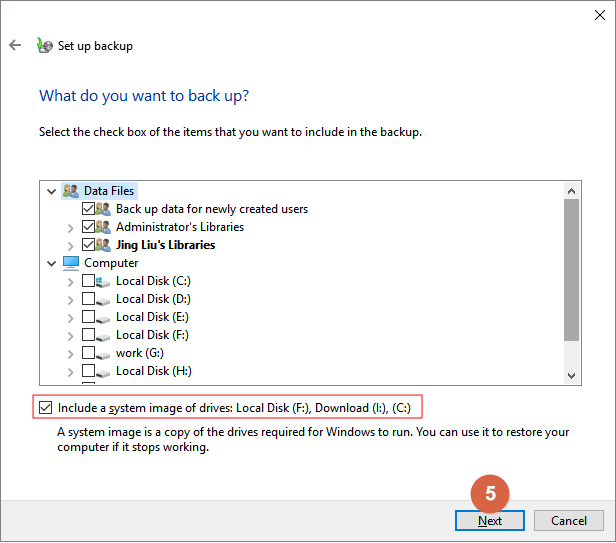
Step 5. Next you can review the backup task and have the possibility to select how your backup process will run. To configure your scheduled backups use the "Change schedule" link. When done, click "Save settings and run backup".
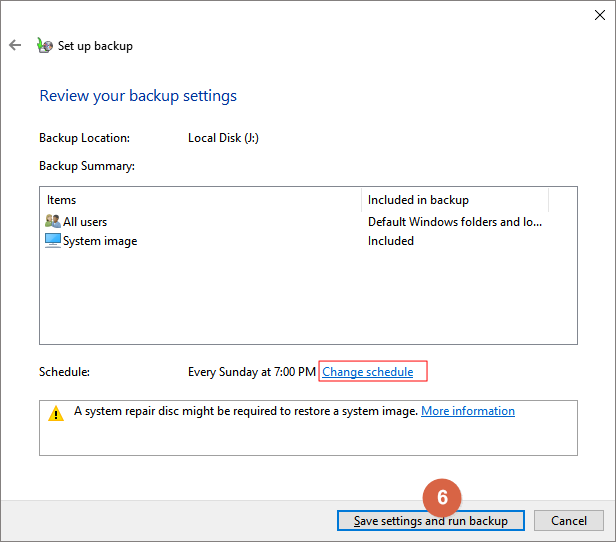
"Change schedule" lets you to configure how often/what day/what time you want to run a backup. For an efficient backup task, the recommended schedule is reasonable to adopt.
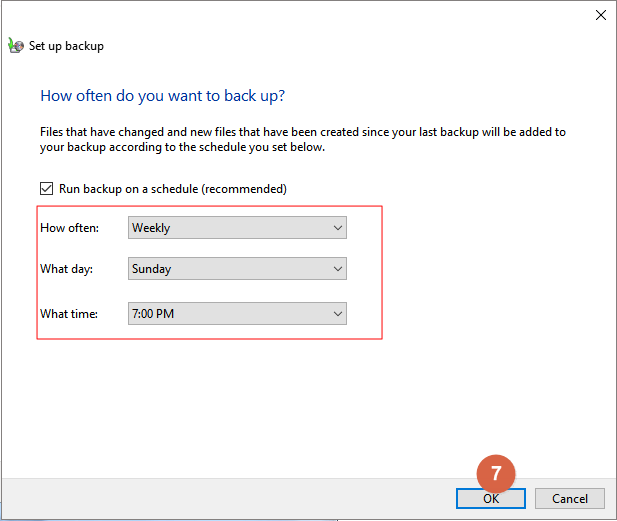
Step 6. After all the configurations made, the complete window will display the backup in progress, and detailed information of the backup status is showing in below, such as the next and last backup, the contents and schedule.
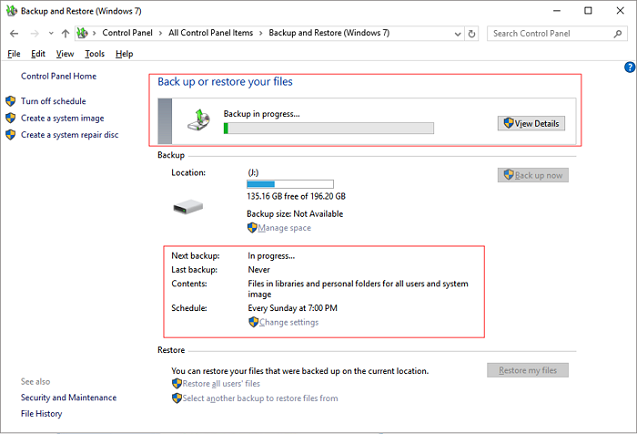
How to Back Up Everything Using Qiling Backup in Windows 10/8/7
After viewing the overall steps to create a backup in File History or Backup and Restore, most of you may feel upset because the procedures are quite long and complex to follow. Things can turn much easier in Qiling Backup, of which the ease of use is the top priority we would consider.
Besides, as the above comparison table displays, the third-party free backup software can do more backup jobs, and let you customize your backup files smartly, which both native Windows backup tools cannot:
- Create a full backup as well as incremental backup and differential backup
- Support one-click smart file backup without manually configuring the first backup
- Compress the accumulative backup images in a minimized size
- Encrypt the backup image with passwords
- Allow you to save backups to a cloud drive like Google Drive, Dropbox and OneDrive
- Automatically backup files to external hard drive and USB flash drive after being plugged in
Step 1. Open Qiling Disk Master and select "File backup" as the backup mode in the "Backup and recovery" page.
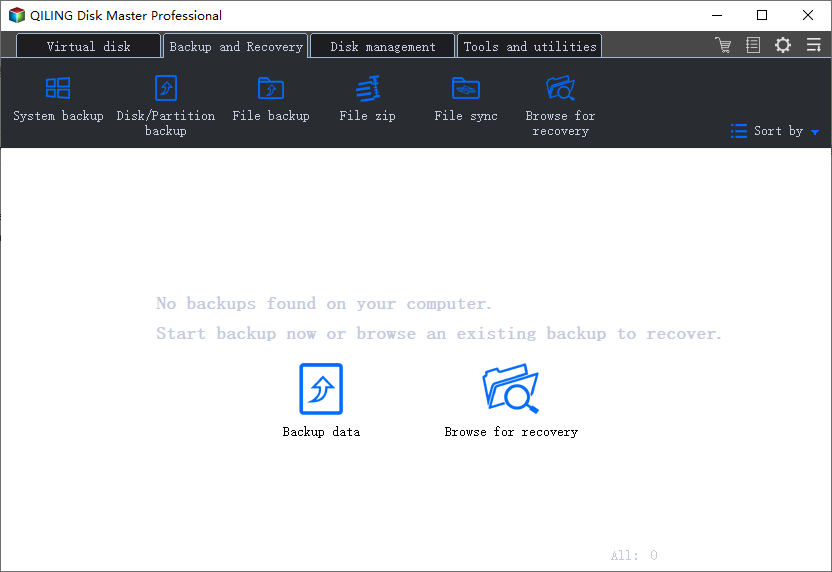
Step 2. Select the files to backup and select the backup destination.
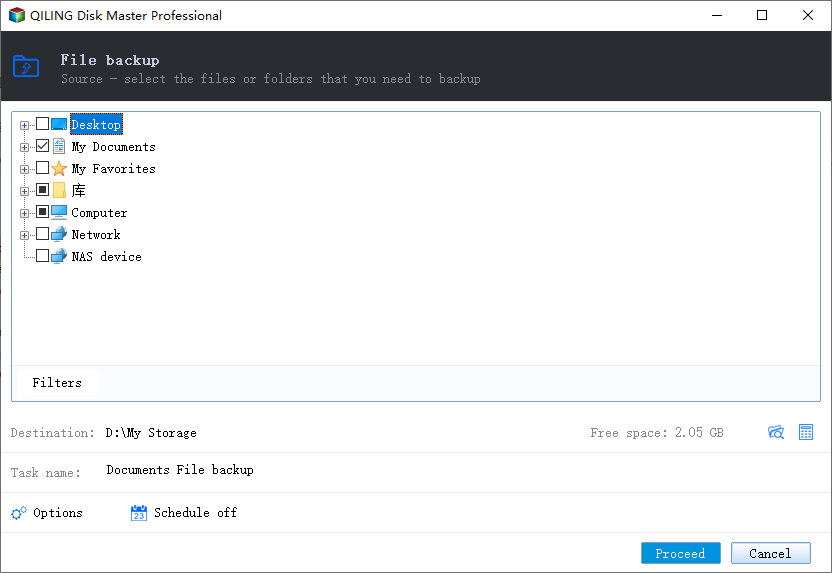
You can choose specific files that you want to back up by browsing the left pane and click "Browse" to select a destination for saving the file backup.
You'd better create the backup file in some other storage media or in some other drive. If not, there may be a risk of the backup file getting corrupted or destroyed.
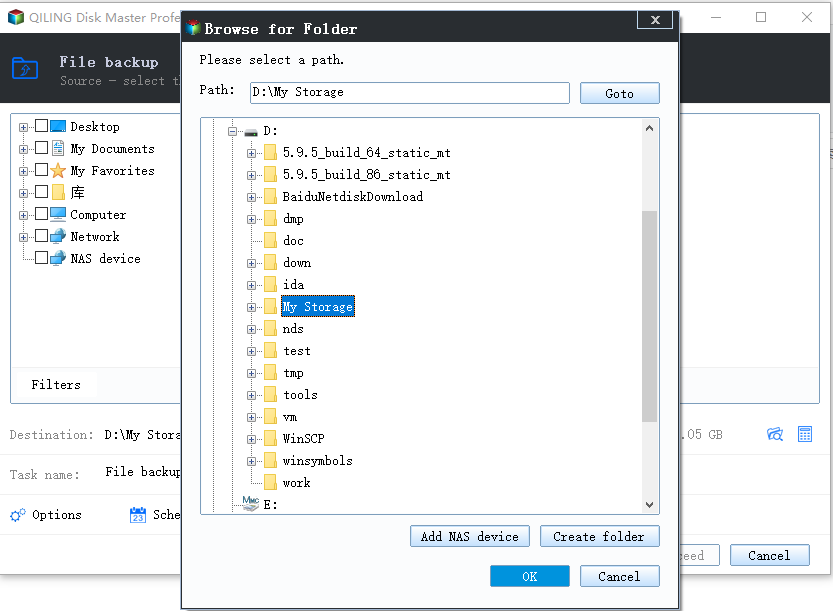
Step 3. Create a backup plan to automatically back up selected files.
Click "Schedule: Off" to create a flexible and automatic backup plan.
Set the automatic backup schedule by day, by week or by month and click "Save" to keep the changes.
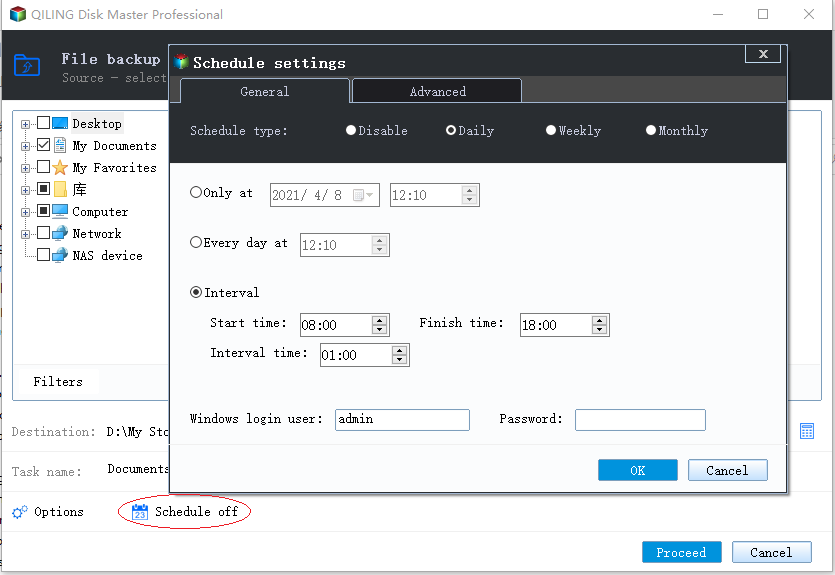
And the Image-reserve strategy will help you to keep the backup image as per image retention rule.
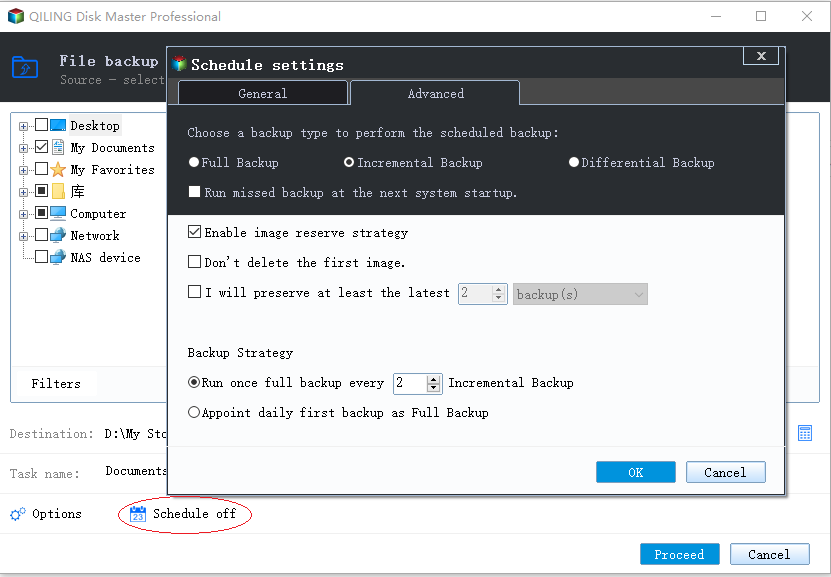
If you can also click "Backup options" at the left bottom to set more advanced parameters for the plan.
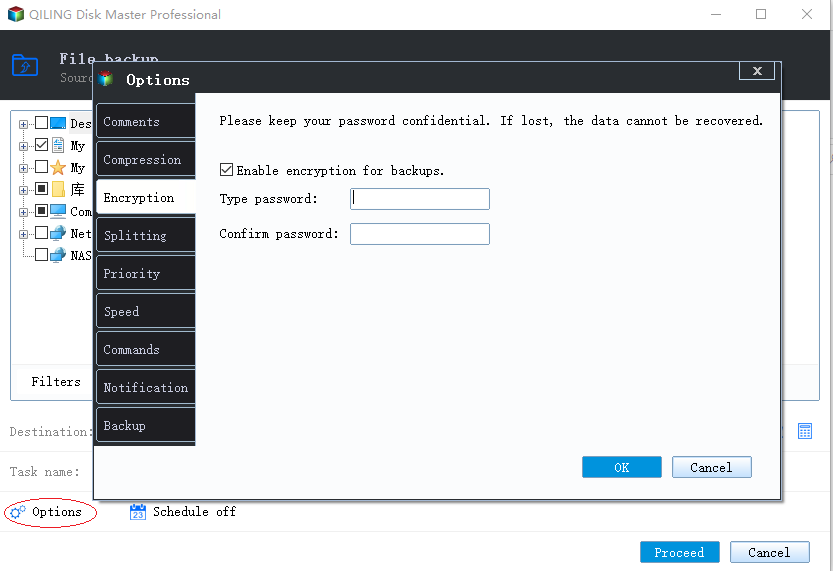
Step 4. Click "Proceed" to execute your operation.
Related Articles
- Create System Image on USB Drive in Windows 10/8/7
- Deploy Windows 10 with Best Windows 10 Deployment Tool
- How to Clone C Drive to SSD in Windows 10
- How to Backup Windows 10 with [1] Qiling Backup and [2] File History
- Learn How to Make Full Backups with 3 Windows 10 Backup Options